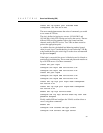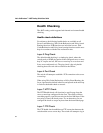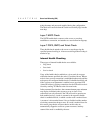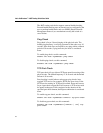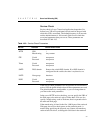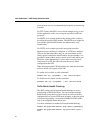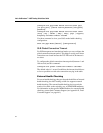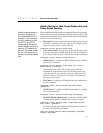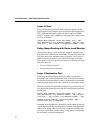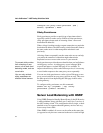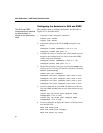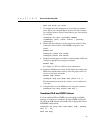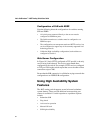
C H A P T E R 18 Server Load Balancing (SLB)
375
Health Checks for Web Cache Redirection and
Policy Based Routing
Health checking works on
the ports configured by
their associated flow. For
example, if you configure
a flow to redirect on port
80 (HTTP), but FTP is
configured as the service
check, the switch will try to
open an FTP session on
port 80. The health check
will fail if the protocol will
not work on the configured
flow.
Several additional health checks are supported for the flows that are
defined under web cache redirection and policy based routing. The
operation and definition of these health checks are identical to those
used for server load balancing.
• Ping Check: The ping check is the only health checking that will
work with a wildcard as the Layer 4 IP port. To configure a ping
check for a defined flow, use this command:
configure <flow> service-check ping
• Layer 4 Port Check: The port has to be defined and open on the
next hop in order for the health check to succeed. To configure a
Layer 4 Port health check for a defined flow, use this command:
configure <flow> service-check L4-port
• HTTP Check: To configure an HTTP health check for a defined
flow, use this command:
configure <flow> service-check http url “<url>”
match-string “<string>”
In this example the switch will connect to the cache and
download the page
test.htm in the root WWW directory and
search the page for the word
pass in the first 1000 bytes. The
quotation marks are necessary for the switch to recognize the
Web page and the string.
• FTP Check: To configure an FTP health check for a defined flow,
use this command:
configure <flow> service-check ftp user <user>
<password>
• NNTP Check: To configure an NNTP health check for a defined
flow, use the command:
configure <flow> service-check nntp <newsgroup>
• POP3, SMTP and Telnet Checks: To configure a POP3, SMTP
or Telnet health check for a defined flow, use the command:
configure <flow> service-check <pop3|smtp|telnet>
user <user> <password>
Configuring health check timeouts and frequencies is similar to
the server load balancing command:
conf slb global service-check frequency <seconds>
timeout <seconds>



